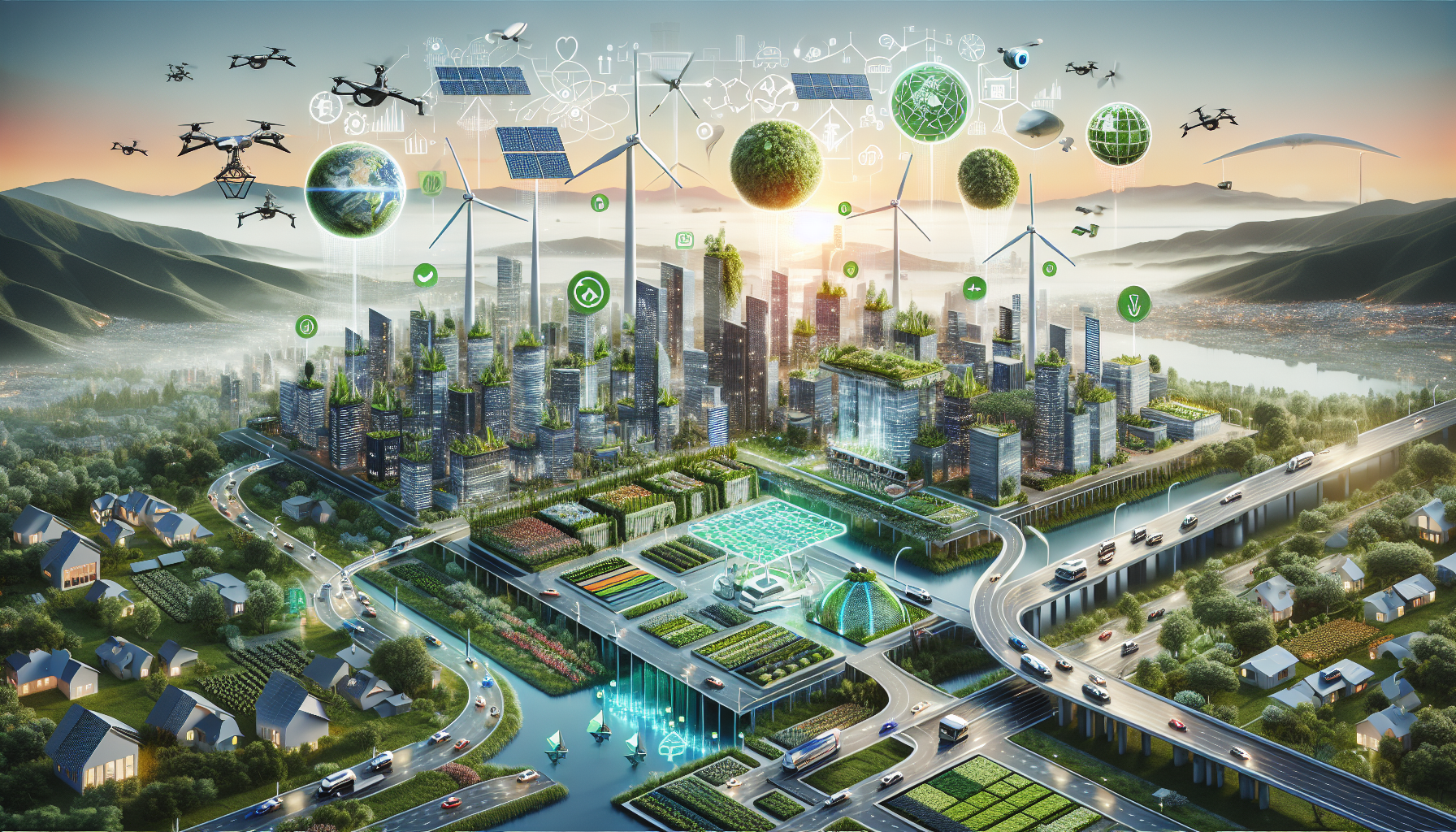
Sustainable Technology: Powering a Greener Tomorrow
Sustainable technology encompasses innovations designed to minimize negative environmental impacts while promoting economic growth and social equity. This rapidly evolving field offers solutions for a plethora of global challenges, from climate change and resource depletion to pollution and waste management. Exploring and implementing these technologies is crucial for building a greener and more sustainable future.
Renewable Energy: Harnessing Nature’s Power
Transitioning from fossil fuels to renewable energy sources is paramount for mitigating climate change. Solar power, through photovoltaic cells and concentrated solar power systems, harnesses the sun’s energy for electricity generation and heating. Wind energy, utilizing turbines of varying sizes, captures the kinetic energy of wind to produce electricity. Hydropower, a more established technology, leverages the potential energy of water stored at higher elevations. Geothermal energy taps into the Earth’s internal heat for direct use or electricity generation. Bioenergy, derived from organic matter like wood and agricultural residues, can provide sustainable fuels and heat.
Smart Grids: Optimizing Energy Distribution
Smart grids represent a significant advancement in energy management. By integrating digital technologies, advanced sensors, and two-way communication systems, smart grids enhance efficiency, reliability, and flexibility within the electricity grid. They enable better integration of renewable energy sources, reduce transmission losses, and empower consumers to manage their energy consumption more effectively. Smart grids also facilitate the development of microgrids, localized grids that can operate independently or connect to the main grid, enhancing resilience and reducing dependence on centralized power generation.
Green Building: Constructing a Sustainable Habitat
Green building practices focus on minimizing the environmental impact of buildings throughout their lifecycle, from design and construction to operation and demolition. These practices include utilizing sustainable materials like recycled content and locally sourced timber, optimizing energy efficiency through passive design and smart building technologies, implementing water conservation strategies like rainwater harvesting and greywater recycling, and minimizing waste generation during construction and demolition. Green building certifications, such as LEED and BREEAM, provide standardized frameworks for evaluating the sustainability of buildings.
Sustainable Transportation: Reducing Emissions on the Move
The transportation sector is a major contributor to greenhouse gas emissions. Sustainable transportation solutions aim to reduce this impact through various strategies. Electric vehicles (EVs), powered by batteries or fuel cells, offer a cleaner alternative to conventional gasoline-powered vehicles. Hybrid vehicles combine electric motors with internal combustion engines, improving fuel efficiency. Public transportation systems, including buses, trains, and trams, provide energy-efficient and space-saving alternatives to private vehicles. Active transportation, such as walking and cycling, promotes health and reduces emissions. Furthermore, advancements in biofuels and hydrogen fuel cell technology are paving the way for cleaner and more sustainable transportation options.
Circular Economy: Closing the Loop on Resource Use
The circular economy model aims to minimize waste and maximize resource utilization by transitioning from a linear “take-make-dispose” model to a closed-loop system. This involves designing products for durability, repairability, and recyclability, implementing strategies for resource recovery and reuse, and promoting industrial symbiosis, where the waste of one industry becomes the raw material for another. The circular economy fosters resource efficiency, reduces pollution, and creates new economic opportunities.
Precision Agriculture: Optimizing Food Production
Precision agriculture leverages technology to optimize crop yields and minimize environmental impacts. Techniques like GPS-guided tractors, drones equipped with sensors, and data analytics enable farmers to precisely apply fertilizers, pesticides, and water, reducing waste and minimizing runoff. Soil sensors and weather monitoring systems provide real-time data for informed decision-making, further enhancing efficiency and sustainability in agricultural practices.
Water Management Technologies: Conserving a Precious Resource
Water scarcity is a growing global concern. Sustainable water management technologies address this challenge through various approaches. Water-efficient irrigation systems, such as drip irrigation and micro-sprinklers, minimize water waste in agriculture. Advanced water treatment technologies, including membrane filtration and reverse osmosis, enable the purification and reuse of wastewater. Smart water meters and leak detection systems help identify and address water losses in urban areas. Rainwater harvesting and greywater recycling systems provide alternative water sources for non-potable uses.
Waste Management: Reducing, Reusing, and Recycling
Effective waste management is essential for minimizing environmental pollution and conserving resources. Waste reduction strategies focus on minimizing waste generation at the source through initiatives like product redesign and consumer education. Reuse and repurposing of materials extend the lifespan of products and reduce the need for new resources. Recycling processes transform waste materials into new products, conserving resources and reducing landfill waste. Composting organic waste creates nutrient-rich soil amendments. Anaerobic digestion converts organic waste into biogas, a renewable energy source.
Green Chemistry: Designing Sustainable Chemical Processes
Green chemistry principles focus on designing chemical products and processes that minimize or eliminate the use and generation of hazardous substances. This involves using renewable feedstocks, designing less hazardous chemical syntheses, using safer solvents and reaction conditions, and minimizing waste generation. Green chemistry plays a vital role in creating a more sustainable chemical industry and reducing the environmental impact of chemical products.
Environmental Monitoring and Data Analysis: Tracking Progress and Informing Decisions
Environmental monitoring technologies, such as remote sensing satellites, air quality sensors, and water quality monitoring systems, provide valuable data on environmental conditions and trends. This data, combined with advanced data analytics tools, enables researchers and policymakers to track environmental changes, assess the effectiveness of sustainability initiatives, and make informed decisions regarding environmental management and policy. This data-driven approach is crucial for achieving measurable progress towards a greener future.














